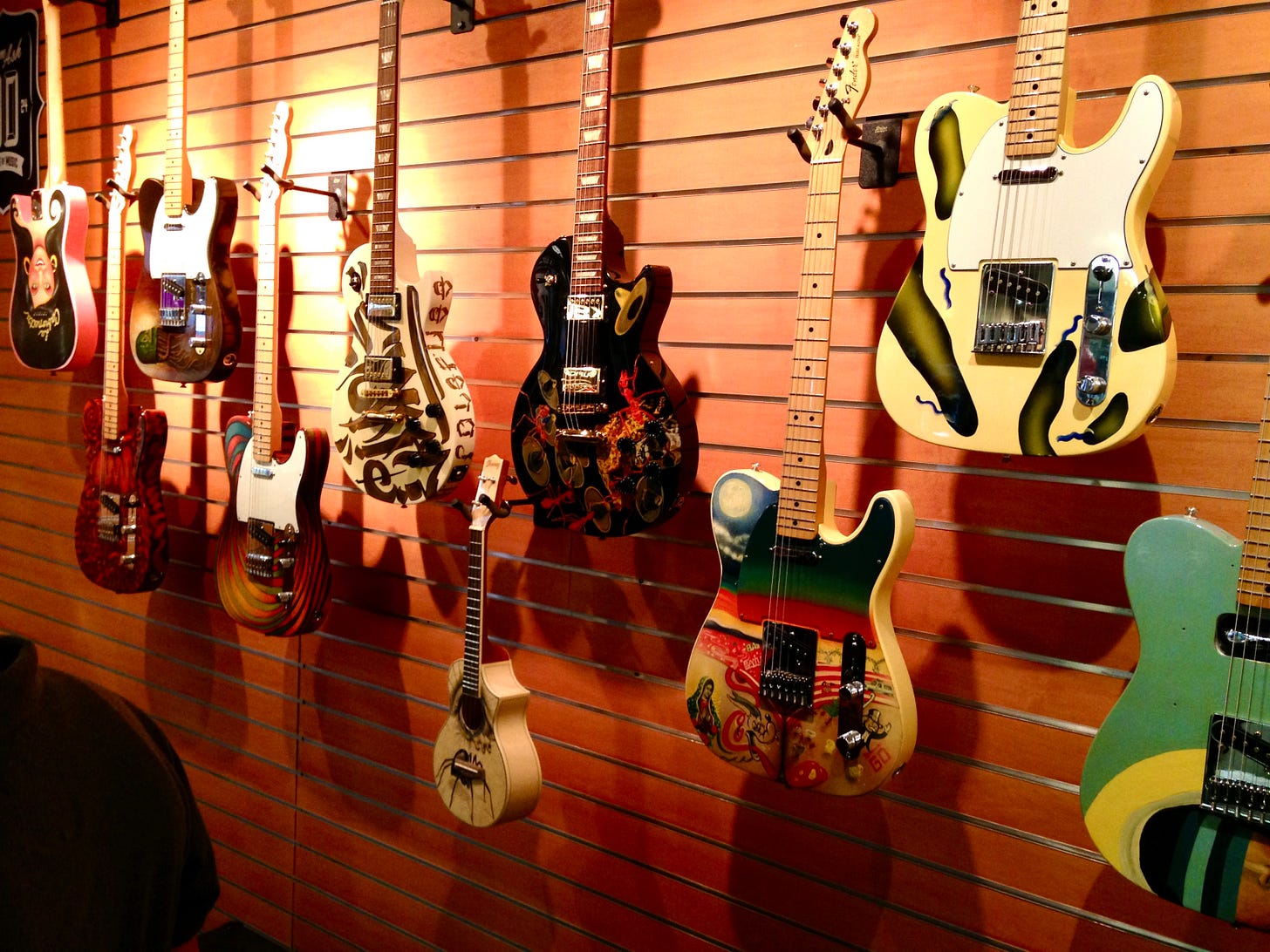Back in the spring of 1979, right around the same time that I was inadvertently drawing the flirtatious attentions of young Van Halen fans and getting high for the first time while listening to Foghat, I was also becoming completely obsessed with Cheech & Chong.
The 1978 cult classic Up in Smoke had introduced me to the world’s greatest stoner comedy duo, but what really tipped the scales of my fandom was The Dr. Demento Show, whose four-hour live broadcasts on KMET almost always featured a classic bit from one of Cheech & Chong’s many albums. “White World of Sports,” “Sister Mary Elephant,” “Waiting For Dave,” “Earache My Eye” — my L.A. friends and I knew them all by heart.
If you’d told me at the time that I would one day get to rap with Cheech Marin about art and music — and that, in the course of our conversation, he’d hit me up for some weed — my young mind would have truly gone “up in smoke”. But that’s exactly what happened one wonderful afternoon in May 2015, when I had the profound pleasure of meeting up with the legendary comedian and art collector in the High End Guitar Room at the Sunset Boulevard location of music retailer Sam Ash, where I interviewed him for a Guitar Aficionado cover story.
The main focus of our interview was the Cheech-curated art series Blazing Chicano Guitars, which featured guitars customized with one-of-a-kind artwork by Chicano artists including Jari “WERC” Alvarez, Charles “Chaz” Bojórquez, Carlos DonJuan, Adrián Fernández, Cheech’s daughter Jasmine Marin, Joe Peña, Alex Rubio, Ricardo Ruiz, John Valadez and Jaime “GERMS” Zacarias.
“I’m a collector of Chicano art,” explained Cheech, whose mammoth collection is now housed at The Cheech Marin Center for Chicano Art & Culture in Riverside, California. “I’ve been a musician all my life, a guitar player and singer from a very early age. My manager Ben Feigen had this association with Sam Ash, and we were doing a bunch of guitar deals with them — Cheech and Chong guitars — so the suggestion came up: Why don’t you put some Chicano artists together with these guys, and see what they can do? And this is the result…
“We thought this would be good way to bring more attention to these artists, and to Chicano art in general, and as a commercial venture — we want to sell these guitars, so that the artists make money and they don’t starve!”
Of course, I had plenty of other things I wanted to ask the East L.A.-born icon — whose prodigious list of film and television credits also includes Nash Bridges, Lost, Machete, The Lion King and the Cars franchise — and Cheech was more than happy to shoot the shit with me for an hour or so. He also completely blew my mind with his story about being housemates with the brilliant (and deeply troubled) folk blues singer Karen Dalton back in the early 1970s… a story which he punctuated with a frighteningly spot-on imitation of her cracked and haunted singing voice.
It was a pretty magical afternoon — and today I’m sharing the highlights of our chat (some of which didn’t make it into the magazine) with my paid subscribers. Enjoy!

When did you first get into Chicano art?
About the mid-eighties, 1985. I’d been collecting other things, art nouveau, art deco — I was trained in art from an early age. I was self-educated; I went to the library, took out all the art books and looked at the pictures, and found out what was what. And the gap in my knowledge was contemporary art; I kind of knew some names of modern artists, but that was it.
So I started going to galleries here in L.A., and discovered the Chicano painters that were showing their work at contemporary galleries — the Robert Berman Gallery in Santa Monica, places like that. And wow, I was knocked out! I knew what good painting was, because I’d seen it all my life in museums and books. And I was like, “Hey, these guys are good — they can do it!” It was like discovering a new band that can really play, man, out in the middle of Joshua Tree or something! It was like, “Who the fuck are these guys? They’re really good!” And Chicano art’s a really vibrant, growing and emotional school of art; it’s a thought pattern, a cultural thought pattern.




